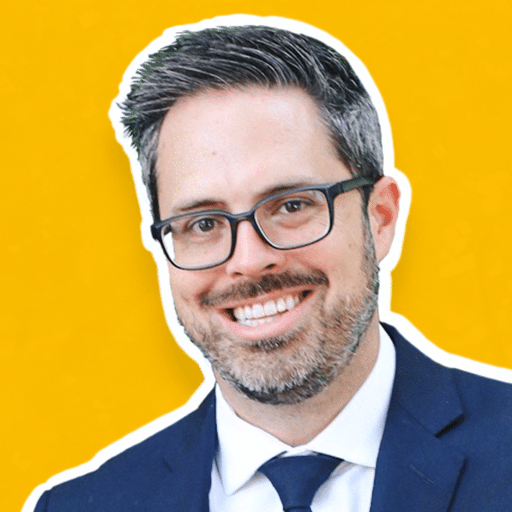I’m on a flight right now to Guatemala. If I’m honest, this is the first time I’ve had in a few weeks to do any creative writing. No one can call me right now, so it’s the perfect time to write.
I’m feeling inspired about an incredible new business model I really believe in. Carl Richards ( Behavior Gap / Society of Advice ) and I have been hiking around the mountains and talking about the future of advice. We spent a lot of time together brainstorming about how we can create a “membership” model that could have a huge impact.
I don’t want to speak for him, but I feel super energized about the idea. The big picture is simple—we want to build a different service line that expands access to more people, less expensively. We want to improve sales conversion rates, enhance business development, and widen the funnel for prospecting. And, we want all that to be even more profitable than ever.
We see a future where the right financial philosophy and the right tech work together in one platform to lower the cost of advice and improve how advisors attract, educate, and convert new clients. We want to touch a much larger segment of the market than has been possible before.
This is a very hard thing to do. So many people have been trying to hack this problem, unsuccessfully. It’s been a long road, but I see a lot of evidence that this is the right time to finally start expanding our impact.
I’d like to share a little backstory to help you understand my experience.

THE BIRTH OF THE VISION
In 2014, I spent $20,000 on consulting. Excited to build my vision, I hopped on a flight to meet the “expert” and attend a multi-day consulting event. After sessions, and throughout the event, we discussed my business model.
I didn’t want to exclusively target “big asset” cases, who were near retirement. Of course, I wouldn’t reject that business, and I had some really profitable, wealthy clients. But I wanted to help people much earlier in their careers. I can’t change the path of a 65 year old, but if I can educate someone in their 20’s, 30’s, or 40’s, I can have a massive impact, and in some cases, redirect their entire financial trajectory.
I knew, though, that since these folks wouldn’t have a lot of AUM, it would probably require a different type of service. I didn’t want to have an asset minimum starting point, and I was tired of watching large firms sell products to people, and then call it “planning.” I felt the need for REAL education. REAL, holistic planning. And that advice needed to be completely separated from selling product.
I felt like subscription would probably be a big part of the future.
The expert looked at me a little confused. I’m not sure if he was annoyed with my incessant questions, or bothered with my youthful naïveté. In either case, the message he conveyed was for me to slow down, and consider that that wasn’t the road I wanted to go down. That while I loved people and wanted to help, it would be best to set a higher asset minimum (like $1,000,000), and weed out the people who didn’t meet that criteria.
That triggered something inside of me. I was furious. My internal monologue went something like: What the hell do advisors even do then? Are we just order takers for the wealthy? Most people need advice in order to make $1,000,000. What kind of impact am I having if I just show up after they’re rich?
I wanted to innovate on how to lower costs, not just jack up prices every time things got “hard.” It felt like the answer was in expanding access, not restricting it.
Maybe today I’d have the guts to speak up, but back then I was still pretty scared to make the wrong decision.
I got into this business to help people. I didn’t get into this business to make myself rich. I was willing to “service” the wealthy, but what about those who wanted to be? I knew that the earlier I could work with someone in their life, the more impact I could have.
It was clear to me after spending my $20,000, that I just needed to stop working with this consulting group. I had a few follow up consulting sessions after the event, and sent them a nice email parting ways.
BOTH / AND
Of course, I still wanted to be successful. I wanted nice things. But I decided right then to either be a part of the solution the industry needed, or to leave the industry altogether.
That expert group told me the solution was all about fewer clients, more exclusivity, and higher fees. But I envisioned a different business model that was more both/AND. Yes to what they were teaching me for some of my clients. And we would still go after that part of the market. The clients who wanted to buy white-glove service. But I wanted our firm to also serve more clients, more revenue, more service models, and simply apply appropriate fees and services for each segment.
If you want to see how things worked out, you can take a look at Dentist Advisors. It has been more successful than I ever imagined. We serve the high end of the market, and those who are struggling to pay off their credit cards. We use subscription fees and AUM fees to access a part of the market that would otherwise be impossible to serve. Shortly after that consulting event, we started to build out our service offering, and I decided to rebrand my business to further commit to my niche market (previously, it was called Aquire Wealth).
For years, we weren’t able to service anyone but the high end of the market. Similar to Tesla, we had to start with the Roadster. We still had to provide a model to the customers who had the means and desire for a white-glove service. These were some of the most successful dentists and specialists in the country. But we also started building a financial planning process that would eventually become “Elements.” We did this all inside of Dentist Advisors.
We launched a podcast called the Dentist Money Show in 2015 and the business slowly started to become a national firm. As of today, we work with dentists in 49 states, we’re still waiting on New Hampshire.
(An aside—if you know a Dentist in NH, please refer him or her and I’ll send you on a trip to Hawaii. Wait, I don’t think I can do that. Never-mind. I’ll send you a thank you card and gift certificate for less than $100? Ok, never-mind, word in from compliance, I literally can’t do anything for you.)
After building out the high-end of the market, we needed to re-envision what “planning” would look like for those who had a lower budget. Existing tools were built for the latter stages of a client’s career, and they focused almost exclusively on retirement income planning. I would need a planning process that was more in line with the needs of the next generation. Some education, a ton of different subjects (comprehensive) and less “retirement”-focused conversations. In fact, most of them felt mixed about the word “retirement.” I don’t really think about “retirement” the same way as my parents did, they would tell me.
Also, we would need to have a service that was a bit more in line with the subscription economy. And it would need to look attractive—design felt important. And, I wanted to make sure we covered everything. I wanted it to be comprehensive, and certainly not planning “light,” but I needed to cut out a lot of the unnecessary stuff for this demographic.
These customers had lots of financial questions—I just needed a cost effective way to answer those questions. I needed to design something entirely new.
PLANNING IN YOUR POCKET
I started to think of it as more of a “financial monitoring” system. Like a scorecard, or a dashboard. And I needed it to be much less expensive to operate than the traditional stack. “Planning” in your pocket. Mobile first. And because a lot of the “work” of servicing these accumulators was educating them on basic concepts, I’d want to try and design the system to sort of educate them even if I couldn’t have a conversation. That meant I’d probably need to make it simple enough, and collaborative enough, that clients could understand the output AND the input.
If it became too complex to understand it would shift all of the cost right back to me and my team. Of course, I struggled with how to separate this new service from my more traditional service. These aren’t the same service.
The higher end of my clientele would likely still want a white glove experience. They probably wouldn’t want to lift a finger. The high end could call, and text me whenever they wanted. Meet with me at any time. I would completely “own” everything for them. I’d take them to dinner at Valters, and focus on doing everything I could possibly do for them. I’d fill out every loan application, meet with their attorney on their behalf, basically anything they wanted.
This new market would likely need to be a bit more reactive. More focused interactions, more scalable. I started thinking about one-to-many services. Group trainings. Office hours. Individual strategy sessions. A la carte advice.
I tried to do this on spreadsheets, Google Forms, Salesforce, and existing planning systems. But it was simply too expensive. All of my efforts were only resulting in more frustration. As I tried to scale through manual spreadsheet entries and Google forms and reports I started to see just how expensive this was going to be without a really BIG piece of tech. I was convinced after trying that I couldn’t afford to build the tech solution through bootstrapping and investing my own profits. I decided to get professional investors to help me.
And Elements was born out of this challenge.
Thanks to several visionary investors, and a lot of hard working people at both Dentist Advisors and Elements, we were able to get a product off the ground that finally empowered my RIA (and others) to start taking advantage of the opportunity that exists. There are quite literally tens of millions of people who have never had access to a competent professional. I believe the future is here, and that the niche, RIA community has the best chance at solving the problem.
The Elements process allowed us to access lots of accumulator segments of the market through subscription fees that helped subsidize low AUM balances. But when the work was more manual, and advisor driven, our team wasn’t able to access the lowest income segment of our niche (the dental students, the youngest associates—the “average” joe).
As of 2022, Elements finally made it possible and this allowed Dentist Advisors to unlock the final frontier.
I’m so proud of my team at Dentist Advisors for having the courage to brave the unknown and launch a membership model that expands access to more people. They might be one of the first, if not the first, RIA in the country to launch a membership model. May 2021 was the month that I could finally say that our firm could offer both traditional service and a non-traditional membership program that makes financial advice accessible to more people.
Functional jobs will continue to be eaten up by technology. Emotional jobs will not. Humans will continue to play an essential role in services at all levels of income and net worth. Technology like Elements can make that future possible.
The model is simple: holistic monitoring, client-assisted data maintenance, financial-answer sessions, and exclusive content for members. It’s beautiful folks, the future is here.

I can remember a conversation I had with Bob Veres at Insider’s Forum. Bob is a visionary, and someone I respect a lot. I’m paraphrasing him… but he said, “Reese, people have been trying to solve this problem for a long time. Seems like not much has changed. I hope you guys can do it.”
Me too, Bob. Me too.
P.S. I’d love for you to demo our platform and listen to our Elementality podcast to see how we’re working on the solution.

